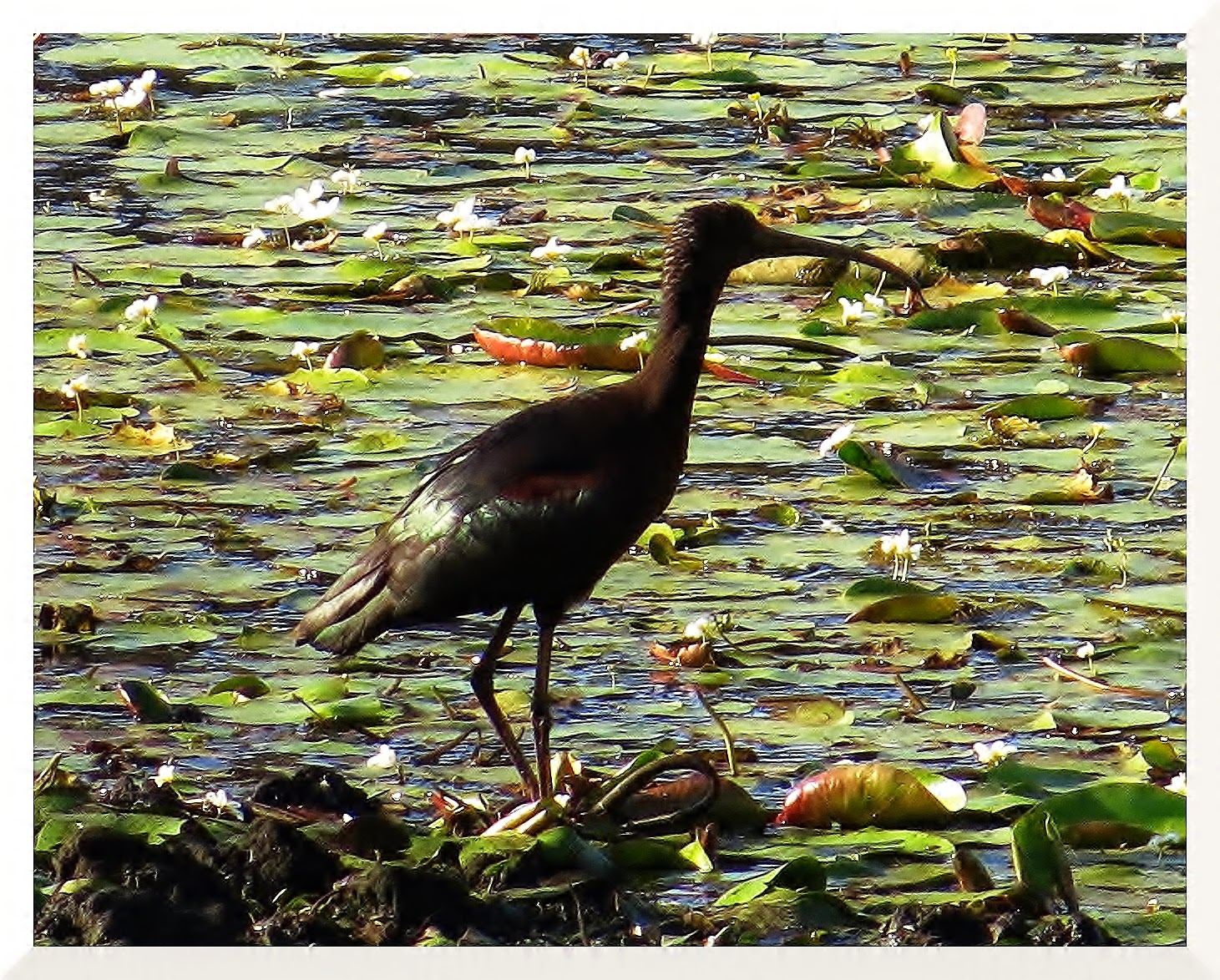Snowflakes in Sandgate
It seems like I am always starting off these monthly wildlife reports by saying that it's been a warmer-than-average month, and this holds true for June 2014 also. While this has led to some beautifully sunny and mild days for nature exploration, the effects on wildlife behaviour have not gone unnoticed.
 |
| Cedar Creek Falls, North Tamborine |
On a visit to Tamborine National Park, I was pleased to have my first sighting of a Common Bronzewing (Phaps chalcoptera), near the picnic ground at the top of Cedar Creek Falls. It was seen furtively carrying twigs into a vine-covered dead tree, nesting a whole month earlier than the breeding season listed for it in my field guide. Another seasonally anomalous sighting was of a Forest Kingfisher (Todiramphus macleayii) pair by Lake Samsonvale; this species is considered to be a summer migrant to South-east Queensland.
The Kingfishers may be able to persist through these winter months because mild daily temperatures increase the availability of their insect prey. Closer to home, I have noted the continuing presence of cockroaches, moths and mosquitoes around my East Brisbane suburb. Not all the creatures that prey on these insects are as classically-beautiful as the Kingfisher however, with Cane Toads (Rhinella marina) and Wolf Spiders (Tasmanicosa species) still lurking on the lawns in the evening.
 |
| Wolf Spider, East Brisbane |
 |
| Glossy Ibis, Sandgate |
It's been a particularly good month for my bird-watching 'life list', as I've seen six species that are new to me. Besides the afore mentioned Bronzewing, an excursion out to the Ipswich rural area of Haigslea gifted me three new bird species, the highlight of which was Australia's smallest bird, the Weebill (Smicrornis brevirostris). The next species was to be seen on a walk along the Tweed River with my 62-year old Dad, who casually paused, pointed and inquired about a bird next to the path. It turned out to be my first White-headed Pigeon (Columba leucomela), which I would have otherwise missed had I been alone - thanks Dad! The discoveries were to continue when I hiked into Beerburrum State Forest and found a small colony of darling Dusky Woodswallows (Artamus cyanopterus) wheeling about the tree canopy. With more sunny and mild days on the way, who knows what treasures I will see on my explorations? One thing is for sure - I'll be sharing them here!
 |
| Dusky Woodswallow, D'Aguilar |
sweet little woodswallow! great wolf spider! hoping you get some good rains, soon.
ReplyDeleteThanks Theresa! I tried to get a photo of the Whistling-Ducks for you, but alas, the Ibis shot turned out better!
Deleteyour photo of the Wolf Spider is SUPER Christian. Nice that your Mum was keen to get out there with you,, and glad the Kooka' made a showing for her. Another wonderful post Christian
ReplyDeleteThanks Carole, I was shocked at what my camera could do for that photo!
DeleteAmazing!! Very surprising to see the Dusky Woodswallows, I saw your report on Birdline. They seem quite scarce in SE Queensland, but believe me they're not in Tasmania!! Great job and I look forward to future posts. :)
ReplyDeleteThanks Ben, yes I think they're a patchy little bird around here. Apparently the Tasmanian population are completely migratory, so maybe these birds I've seen are 'borrowed' from there :)
DeleteInteresting blog. Some great stuff here.
ReplyDeleteThanks David, glad you enjoyed a read! :)
DeleteYou must share them! Love the Wolf Spider.....it's so close up that I can pretend it's not real.
ReplyDeleteThanks Em! I had to get rather close to that spider myself! I kept my eye on it the whole time and let my fingers work the camera on 'auto-pilot'. Their bite is not deadly but it is reported to be very painful.
DeleteA number of our resident birds are breeding early here after a warm and dry spring. The migrants can't always do that as they arrive at their usual dates.
ReplyDeleteCedar Creek Falls looks very inviting - as long as there aren't any wolf spiders. Wood swallows are an interesting family of birds. I remember seeing one species in India - can't recall its name though.
Unfortunately the Wolf Spiders are unavoidable - apparently Australia has a huge range of species that have evolved to take advantage of every possible habitat and micro-habitat, including streamside rocks!
DeleteGreat that you've seen the Woodswallows - there's something so charming about them. They evolved as an Australian group of birds and I did not know there are a few species overseas - thanks!
Hi Christian, I too was very taken with the closeup of the Wolf Spider - what a striking fellow. The love of nature obviously abounds in your family and that's real nice. As again, a really informative post and I think that first photo of yours at the Cedar Creek Falls is quite spectacular. Lucky swimmers :D) Happy walking.
ReplyDeleteThanks Susan, yes I was lucky to grow up with two parents who appreciated the simple things in life. Glad you liked the photos and the info, I was happy with what this month had to offer me! :)
DeleteNice picture of woodswallow - it's a type of bird I've never managed to get any decent pictures of.
ReplyDeleteSorry for slow reply - hectic weeks!
Cheers - Stewart M
No worries Stewart, I can understand and relate completely!
DeleteThe Woodswallow was a lifer for me, so I felt very fortunate to get some nice photos!
Another informative post Christian!
ReplyDeleteThanks Liz, hope you found it useful :)
Delete